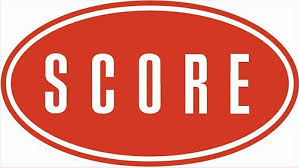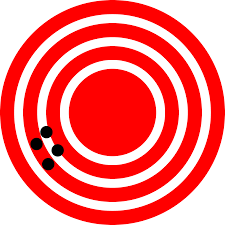
You may be wondering how your SAT score is determined. Where does that score of 200-800 on each section of the SAT come from? What does your SAT score mean? Or, maybe you're familiar with the concept of raw scores, but you don't know how your raw score is converted into a scaled score. Hopefully, this article will answer your questions and clear up any confusion.
In this post, I'll clarify the difference between raw scores and scaled scores and provide charts that show the SAT raw score conversion to scaled score. Furthermore, I'll explain why the data from these SAT score charts can be helpful to you in your SAT preparation.
What Is a Raw Score?
Your raw score for each section is calculated from the number of questions you answered correctly and incorrectly. For every question you answer correctly on the SAT, you receive one point. For every question you answer incorrectly on the SAT, you receive minus ¼ point, with the exception of grid-ins in the Math section, for which you receive zero points for wrong answers. For every question you skip on the SAT, you receive zero points.
The maximum raw score varies for each section. For Critical Reading, there are 67 questions; therefore, the max raw score is 67. For Math, there are 54 questions; the max raw score is 54. For Writing, there are 49 questions and 1 essay. The maximum multiple-choice raw score is 49 and the maximum essay score is 12.
What Is a Scaled Score?
The scaled score is the score from 200-800 you receive on each section of the SAT. Your scaled score is determined from the raw score through a process that the College Board calls equating. Equating “ensures that the different forms of the test or the level of ability of the students with whom you are tested do not affect your score. Equating makes it possible to make comparisons among test takers who take different editions of the test across different administrations.”
Therefore, your scaled score is not dependent on the difficulty of the test or the skill level of the students who take your edition of the test. The College Board doesn’t release its formula for equating, but it does periodically release scoring charts to convert raw scores to scaled scores. The scoring charts change slightly for each edition of the test, but they remain somewhat consistent.

Why Is This Data Important? How Can It Help You?
From your target scaled score, you can get a rough idea of how many questions you need to answer correctly on each section to reach your goal. For example, if you want to get a 750 on Critical Reading, you need to get a raw score of about 62. Therefore, you can only get about 4 questions wrong or omit 5 questions to reach your target score. Having this knowledge can inform your guessing and study strategies.
If you’re aiming for a 600, focus on the easy and medium level difficulty questions. To get a 600 in Reading, you only need a raw score of about 46 out of 67. This means that you can skip 12 questions, get 7 wrong, and still get a 600. Therefore, if your target score is a 600, don’t waste time on the most difficult, time-consuming questions. You can skip the hardest 20% of questions and still reach your target score.
Also, you'll see that the math curve is very harsh. For most tests, you have to answer every single question correctly to get an 800.
Finally, the essay has a big impact on your Writing score. It counts for almost ⅓ of your Writing score. If you get a multiple-choice raw score of 45 and an essay score of 12, your scaled score is about a 760. If you get the same raw score, but an essay score of 7, your scaled score is about a 670. If you can master the SAT essay, you’ll be well on your way to reaching your Writing goal.
Raw Score to Scaled Score Conversion Charts
Below is a sample SAT conversion chart released by the College Board. Remember that SAT score charts change for each edition of the test, but the changes are usually not that drastic. For example, a raw score of 46 in Math converted to a scaled score of 660 on the January 2010 and 2011 editions of the SAT. However, in May 2011 and 2009, a 46 in Math converted to a 680.

Critical Reading
| Raw Score | Scaled Score | 2014 Percentile |
| 67 | 800 | 99 |
| 66 | 800 | 99 |
| 65 | 800 | 99 |
| 64 | 790 | 99 |
| 63 | 770 | 99 |
| 62 | 760 | 99 |
| 61 | 740 | 98 |
| 60 | 730 | 97 |
| 59 | 720 | 96 |
| 58 | 700 | 96 |
| 57 | 690 | 95 |
| 56 | 680 | 94 |
| 55 | 670 | 92 |
| 54 | 670 | 92 |
| 53 | 660 | 91 |
| 52 | 650 | 90 |
| 51 | 640 | 89 |
| 50 | 630 | 86 |
| 49 | 620 | 84 |
| 48 | 620 | 84 |
| 47 | 610 | 82 |
| 46 | 600 | 80 |
| 45 | 600 | 80 |
| 44 | 590 | 78 |
| 43 | 580 | 75 |
| 42 | 570 | 73 |
| 41 | 570 | 73 |
| 40 | 560 | 70 |
| 39 | 550 | 67 |
| 38 | 550 | 67 |
| 37 | 540 | 64 |
| 36 | 530 | 61 |
| 35 | 530 | 61 |
| 34 | 520 | 57 |
| 33 | 520 | 57 |
| 32 | 510 | 54 |
| 31 | 500 | 51 |
| 30 | 500 | 51 |
| 29 | 490 | 48 |
| 28 | 480 | 44 |
| 27 | 480 | 44 |
| 26 | 470 | 41 |
| 25 | 460 | 37 |
| 24 | 460 | 37 |
| 23 | 450 | 35 |
| 22 | 440 | 31 |
| 21 | 440 | 31 |
| 20 | 430 | 28 |
| 19 | 420 | 25 |
| 18 | 410 | 22 |
| 17 | 410 | 22 |
| 16 | 400 | 19 |
| 15 | 390 | 17 |
| 14 | 380 | 15 |
| 13 | 380 | 15 |
| 12 | 370 | 13 |
| 11 | 360 | 11 |
| 10 | 350 | 9 |
| 9 | 340 | 8 |
| 8 | 330 | 7 |
| 7 | 320 | 5 |
| 6 | 310 | 5 |
| 5 | 300 | 4 |
| 4 | 290 | 3 |
| 3 | 270 | 2 |
| 2 | 260 | 2 |
| 1 | 240 | 1 |
| 0 | 220 | 1 |
| -1 | 210 | 1 |
| -2 or below | 200 | -- |

Charts are fun.
Math
| Raw Score | Scaled Score | 2014 Percentile |
| 54 | 800 | 99 |
| 53 | 790 | 99 |
| 52 | 760 | 97 |
| 51 | 740 | 96 |
| 50 | 720 | 95 |
| 49 | 710 | 94 |
| 48 | 700 | 93 |
| 47 | 690 | 92 |
| 46 | 680 | 90 |
| 45 | 670 | 89 |
| 44 | 660 | 87 |
| 43 | 650 | 86 |
| 42 | 640 | 84 |
| 41 | 640 | 84 |
| 40 | 630 | 82 |
| 39 | 620 | 80 |
| 38 | 610 | 77 |
| 37 | 600 | 75 |
| 36 | 590 | 73 |
| 35 | 590 | 73 |
| 34 | 580 | 71 |
| 33 | 570 | 68 |
| 32 | 560 | 66 |
| 31 | 550 | 62 |
| 30 | 540 | 59 |
| 29 | 540 | 59 |
| 28 | 530 | 56 |
| 27 | 520 | 53 |
| 26 | 510 | 50 |
| 25 | 500 | 46 |
| 24 | 490 | 44 |
| 23 | 480 | 41 |
| 22 | 480 | 41 |
| 21 | 470 | 37 |
| 20 | 460 | 34 |
| 19 | 450 | 31 |
| 18 | 440 | 28 |
| 17 | 430 | 25 |
| 16 | 420 | 22 |
| 15 | 420 | 22 |
| 14 | 410 | 19 |
| 13 | 400 | 17 |
| 12 | 390 | 15 |
| 11 | 380 | 13 |
| 10 | 370 | 11 |
| 9 | 360 | 9 |
| 8 | 350 | 8 |
| 7 | 330 | 6 |
| 6 | 320 | 5 |
| 5 | 310 | 4 |
| 4 | 290 | 2 |
| 3 | 280 | 2 |
| 2 | 260 | 1 |
| 1 | 240 | 1 |
| 0 | 220 | 1- |
| -1 | 200 | -- |
| -2 and below | 200 | -- |

Charts are really fun.
Writing
Essay Score
| Raw Score | 12 | 11 | 10 | 9 | 8 | 7 | 6 | 5 | 4 | 3 | 2 | 0 |
| 49 | 800 | 800 | 800 | 790 | 770 | 750 | 740 | 720 | 710 | 700 | 680 | 670 |
| 48 | 800 | 800 | 780 | 760 | 740 | 720 | 710 | 690 | 680 | 670 | 650 | 640 |
| 47 | 790 | 770 | 760 | 740 | 720 | 700 | 690 | 670 | 660 | 640 | 630 | 620 |
| 46 | 770 | 750 | 740 | 720 | 700 | 680 | 670 | 650 | 640 | 630 | 610 | 600 |
| 45 | 760 | 740 | 720 | 710 | 690 | 670 | 650 | 640 | 630 | 610 | 590 | 580 |
| 44 | 740 | 730 | 710 | 700 | 670 | 660 | 640 | 620 | 610 | 600 | 580 | 570 |
| 43 | 730 | 720 | 700 | 680 | 660 | 640 | 630 | 620 | 600 | 590 | 570 | 560 |
| 42 | 720 | 700 | 690 | 670 | 650 | 630 | 620 | 600 | 590 | 570 | 560 | 550 |
| 41 | 710 | 690 | 680 | 660 | 640 | 620 | 610 | 590 | 580 | 560 | 550 | 540 |
| 40 | 700 | 680 | 670 | 650 | 630 | 610 | 600 | 580 | 570 | 550 | 540 | 530 |
| 39 | 690 | 680 | 660 | 640 | 620 | 600 | 590 | 570 | 560 | 550 | 530 | 520 |
| 38 | 680 | 670 | 650 | 630 | 610 | 600 | 580 | 560 | 550 | 540 | 520 | 510 |
| 37 | 670 | 660 | 640 | 630 | 610 | 590 | 570 | 550 | 540 | 530 | 510 | 500 |
| 36 | 660 | 650 | 630 | 620 | 600 | 580 | 560 | 550 | 530 | 520 | 500 | 490 |
| 35 | 660 | 640 | 620 | 610 | 590 | 570 | 550 | 540 | 530 | 510 | 490 | 480 |
| 34 | 650 | 630 | 620 | 600 | 580 | 560 | 550 | 530 | 520 | 500 | 490 | 480 |
| 33 | 640 | 620 | 610 | 590 | 570 | 550 | 540 | 520 | 510 | 490 | 480 | 470 |
| 32 | 630 | 620 | 600 | 580 | 560 | 540 | 530 | 510 | 500 | 490 | 470 | 460 |
| 31 | 620 | 610 | 590 | 580 | 550 | 540 | 520 | 500 | 490 | 480 | 460 | 450 |
| 30 | 610 | 600 | 580 | 570 | 550 | 530 | 510 | 500 | 480 | 470 | 450 | 440 |
| 29 | 610 | 580 | 570 | 560 | 540 | 520 | 500 | 490 | 480 | 460 | 440 | 430 |
| 28 | 600 | 580 | 570 | 550 | 530 | 510 | 490 | 480 | 470 | 450 | 440 | 430 |
| 27 | 590 | 570 | 560 | 540 | 520 | 500 | 490 | 470 | 460 | 440 | 430 | 420 |
| 26 | 580 | 570 | 550 | 530 | 510 | 490 | 480 | 460 | 450 | 440 | 420 | 410 |
| 25 | 570 | 560 | 540 | 530 | 500 | 490 | 470 | 450 | 440 | 430 | 410 | 400 |
| 24 | 560 | 550 | 530 | 520 | 500 | 480 | 460 | 450 | 430 | 420 | 400 | 390 |
| 23 | 560 | 540 | 520 | 510 | 490 | 470 | 450 | 440 | 430 | 410 | 390 | 380 |
| 22 | 550 | 530 | 520 | 500 | 480 | 460 | 450 | 430 | 420 | 400 | 390 | 380 |
| 21 | 540 | 520 | 510 | 490 | 470 | 450 | 440 | 420 | 410 | 390 | 380 | 370 |
| 20 | 530 | 520 | 500 | 480 | 460 | 440 | 430 | 410 | 400 | 390 | 370 | 360 |
| 19 | 520 | 510 | 490 | 480 | 460 | 440 | 420 | 410 | 390 | 380 | 360 | 350 |
| 18 | 520 | 500 | 480 | 470 | 450 | 430 | 410 | 400 | 390 | 370 | 350 | 340 |
| 17 | 510 | 490 | 480 | 460 | 440 | 420 | 410 | 390 | 380 | 360 | 350 | 340 |
| 16 | 500 | 490 | 470 | 450 | 430 | 410 | 400 | 380 | 370 | 360 | 340 | 330 |
| 15 | 490 | 480 | 460 | 450 | 430 | 410 | 390 | 370 | 360 | 350 | 330 | 320 |
| 14 | 490 | 470 | 450 | 440 | 420 | 400 | 380 | 370 | 360 | 340 | 320 | 310 |
| 13 | 480 | 460 | 450 | 430 | 410 | 390 | 380 | 360 | 350 | 330 | 320 | 310 |
| 12 | 470 | 460 | 440 | 420 | 400 | 380 | 370 | 350 | 340 | 330 | 310 | 300 |
| 11 | 460 | 450 | 430 | 420 | 400 | 380 | 360 | 350 | 330 | 320 | 300 | 290 |
| 10 | 460 | 440 | 420 | 410 | 390 | 370 | 350 | 340 | 330 | 310 | 290 | 280 |
| 9 | 450 | 430 | 420 | 400 | 380 | 360 | 350 | 330 | 320 | 300 | 290 | 280 |
| 8 | 440 | 430 | 410 | 390 | 370 | 350 | 340 | 320 | 310 | 300 | 280 | 270 |
| 7 | 430 | 420 | 400 | 390 | 360 | 350 | 330 | 310 | 300 | 290 | 270 | 260 |
| 6 | 420 | 410 | 390 | 380 | 360 | 340 | 320 | 310 | 290 | 280 | 260 | 250 |
| 5 | 410 | 400 | 380 | 370 | 350 | 330 | 310 | 300 | 280 | 270 | 250 | 240 |
| 4 | 400 | 390 | 370 | 360 | 340 | 320 | 300 | 290 | 270 | 260 | 240 | 230 |
| 3 | 390 | 380 | 360 | 350 | 330 | 310 | 290 | 280 | 260 | 250 | 230 | 220 |
| 2 | 380 | 370 | 350 | 330 | 310 | 290 | 280 | 260 | 250 | 240 | 220 | 210 |
| 1 | 370 | 350 | 340 | 320 | 300 | 280 | 260 | 250 | 240 | 220 | 210 | 200 |
| 0 | 350 | 340 | 320 | 300 | 280 | 260 | 250 | 240 | 220 | 210 | 200 | 200 |
| -1 | 330 | 320 | 300 | 290 | 270 | 250 | 230 | 220 | 200 | 200 | 200 | 200 |
| -2 | 310 | 300 | 280 | 270 | 250 | 230 | 210 | 200 | 200 | 200 | 200 | 200 |
| -3 | 310 | 290 | 280 | 260 | 240 | 220 | 210 | 200 | 200 | 200 | 200 | 200 |
| Writing Scaled Score | 2014 Percentile |
| 800 | 99+ |
| 790 | 99 |
| 780 | 99 |
| 770 | 99 |
| 760 | 99 |
| 750 | 98 |
| 740 | 98 |
| 730 | 98 |
| 720 | 97 |
| 710 | 96 |
| 700 | 96 |
| 690 | 95 |
| 680 | 94 |
| 670 | 93 |
| 660 | 92 |
| 650 | 91 |
| 640 | 89 |
| 630 | 88 |
| 620 | 86 |
| 610 | 84 |
| 600 | 82 |
| 590 | 80 |
| 580 | 78 |
| 570 | 76 |
| 560 | 74 |
| 550 | 71 |
| 540 | 68 |
| 530 | 65 |
| 520 | 62 |
| 510 | 59 |
| 500 | 56 |
| 490 | 53 |
| 480 | 49 |
| 470 | 46 |
| 460 | 42 |
| 450 | 39 |
| 440 | 35 |
| 430 | 32 |
| 420 | 29 |
| 410 | 25 |
| 400 | 22 |
| 3901 | 19 |
| 380 | 17 |
| 370 | 14 |
| 360 | 12 |
| 350 | 10 |
| 340 | 8 |
| 330 | 7 |
| 320 | 6 |
| 310 | 5 |
| 290 | 4 |
| 280 | 3 |
| 270 | 3 |
| 260 | 2 |
| 250 | 2 |
| 240 | 2 |
| 230 | 1 |
| 220 | 1 |
| 210 | 1 |
| 200 | -- |
What's Next?
Now that you've seen the SAT score chart, find out what's considered a good and bad SAT score.
Also, find out how many questions you can miss to get a perfect SAT score.
Want to improve your SAT score by 160 points? We've written a guide about the top 5 strategies you must be using to have a shot at improving your score. Download it for free now:
Have friends who also need help with test prep? Share this article!

Justin has extensive experience teaching SAT prep and guiding high school students through the college admissions and selection process. He is firmly committed to improving equity in education and helping students to reach their educational goals. Justin received an athletic scholarship for gymnastics at Stanford University and graduated with a BA in American Studies.


































 Holly R.
Holly R.